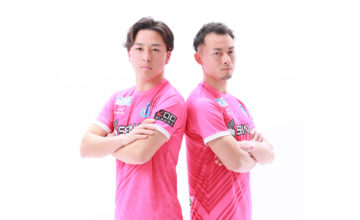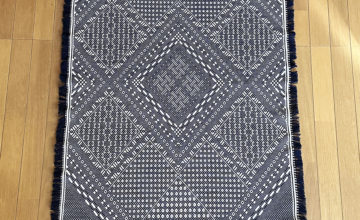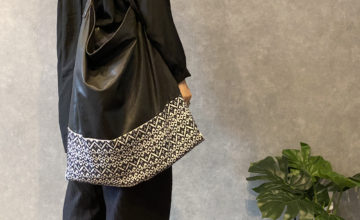The World of Kogin that transcend time and space- TEKONOKO’s World –
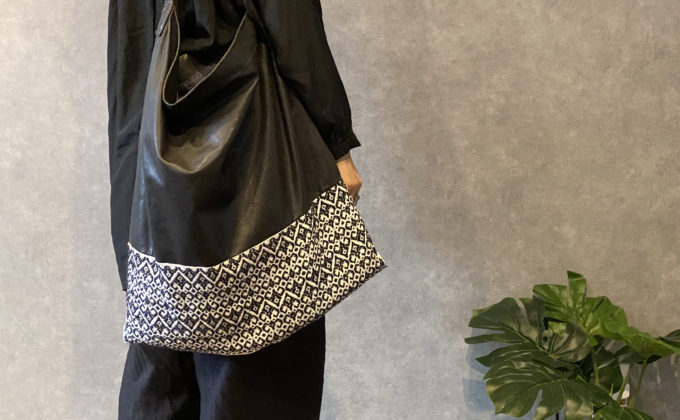
In Osaka, there is a woman who creates her own unique world of patterns using kogin stitch.
Sae Iwanaga of TEKONOKO kogin works is from Hirosaki City, Aomori Prefecture, and has lived in Kansai since coming to Osaka for high school.
The bag shown above is a remake of a bag that Sae has used for many years, which she remade with her original kogin stitch pattern as well as repairing it. It may look like a woven fabric or a print in the picture, but it is Sae’s work in which she stitched the pattern one stitch at a time, just as she does with kogin stitch.
Sae started kogin stitch after she became a member of society. Before that, she had picked up kogin many times as souvenirs to buy for her friends in Osaka when she went back home to Aomori. But She had never thought of making one herself.
When She was taking care of her mother, She was looking for something she could do with her hands in her spare time, and her mother recommended kogin stitch to her. Her mother said, “If you are so dexterous with your hands, you can do it, can’t you?” So that suggestion, She picked up a kogin stitch kit. The tote bag she made with the kit was a gift to her mother.
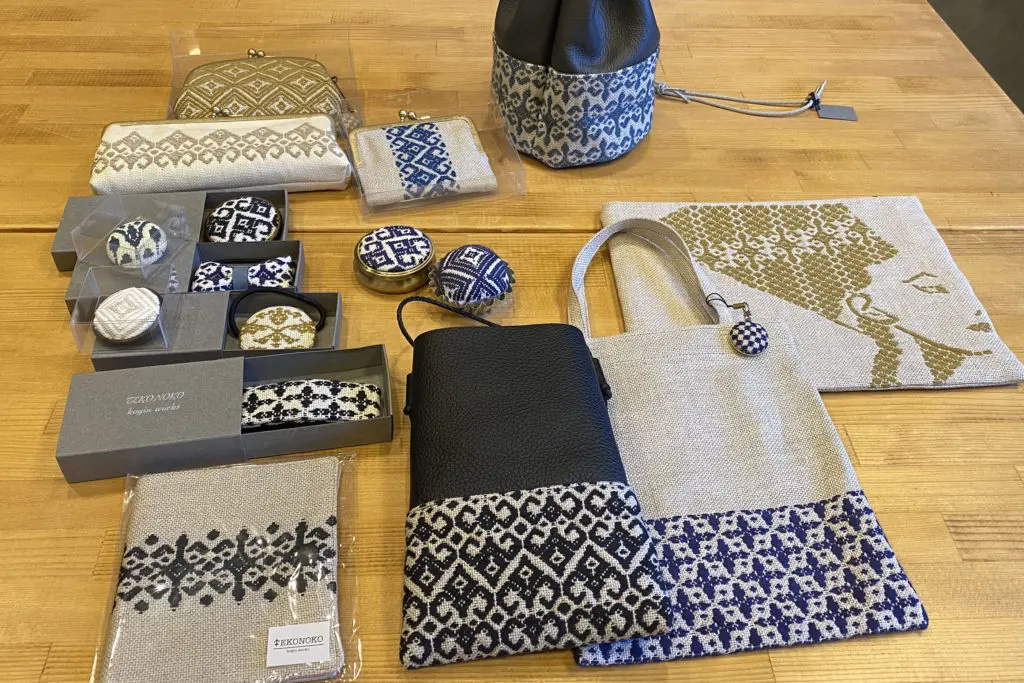
Unfortunately, her mother passed away after recuperation, and Sae left the kogin stitch. However, after a year had passed, she felt as if she had experienced a state of selflessness when she tried kogin stitch for the first time in a long time, and said to a friend, “This may be my calling.
The state of no-self. In psychology, it is also called “flow”. Many people who have experienced kogin stitch or hishi-sashi have probably felt this. Have you ever felt that while you are absorbed in the work at hand, a pattern is formed on the cloth and you enjoy it? This state of immersion is called the flow state, and there is research that suggests that activities that bring about this state lead to human happiness.
Sae has resumed kogin stitch making. At first, she was working with traditional kogin patterns in a modern style, but her unique world of patterns blossomed when she collaborated with the hat brand “coeur“.
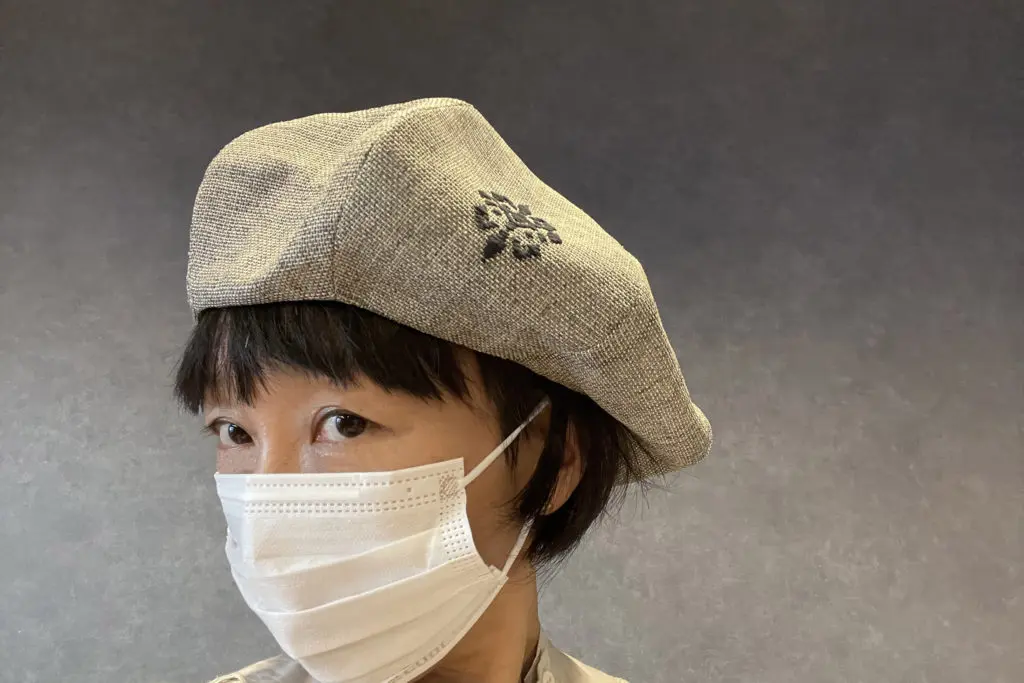
The pattern on this hat is named Lily. Lily is the flower of the Greek goddess Hera, and is said to be a pure flower that rises from the muddy water and is not stained by dirt. This was Sae’s first design.
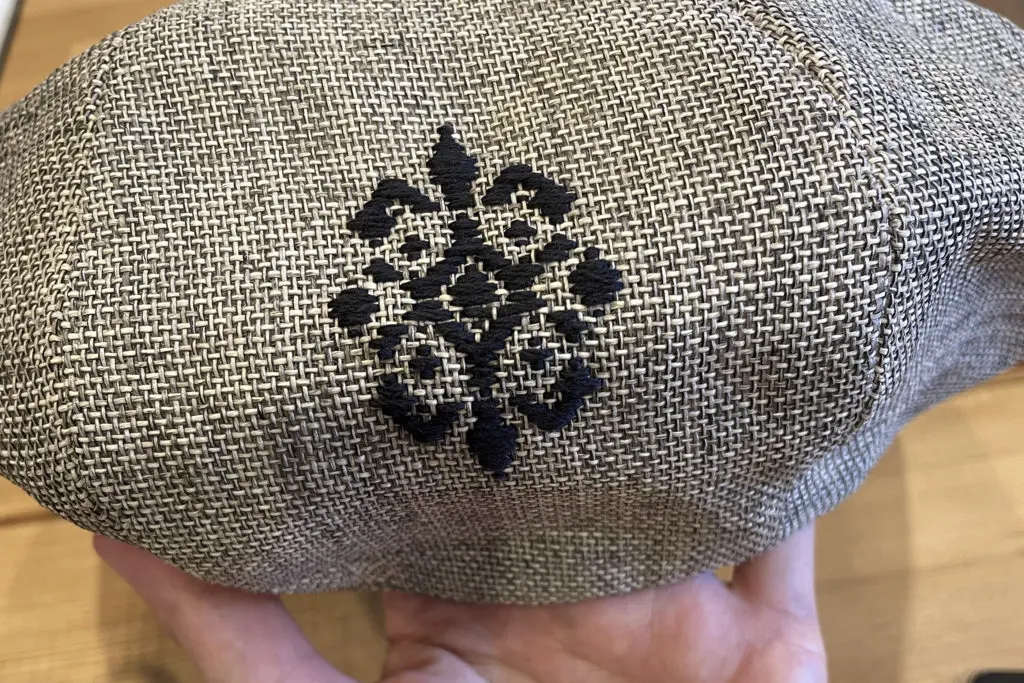
When hat designer asked her to add a pattern to this hat, Sae felt that a traditional Kogin pattern would be different. So, since its brand name is in French, She took a hint from traditional European patterns and created this motif.
European decorations and patterns have a history of various styles that emerged through exchanges with Islam and China since the time of the ancient Egyptians and Greeks. Combined with her interest in world history from this point, Sae dives into the world of European patterns with kogin-sashi and creates new kogin designs of decorative styles of the times from ancient times to the present day.
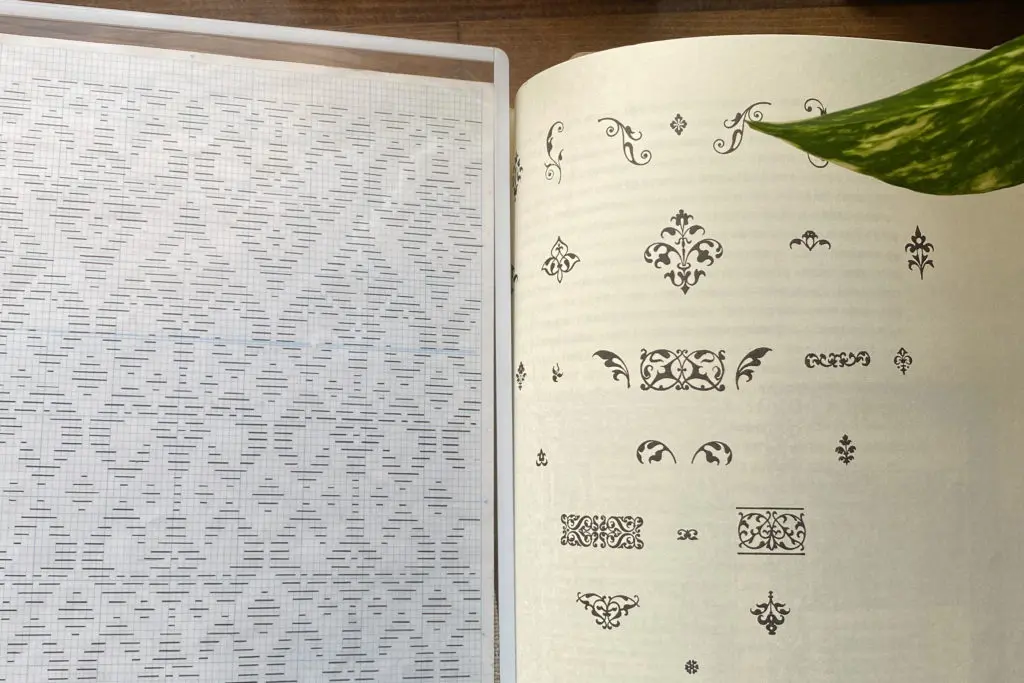
The motifs on the right were used to create the design on the left. Can you understand which motifs are used? I realized that not everyone has the creativity to expand on a design, as my hands did not move even when I tried to imitate them.
To create a pattern, Sae drew one motif on a sheet of graph paper and expanded it to the left, right, top, and bottom, using a book on European design as a reference. Someone sometimes asked, “Don’t you use a computer to create your patterns? However, it seems to be better for Sae to draw by hand on a grid sheet of paper. Then she actually sticks the pattern on the cloth, goes back to the grid, and adjusts the pattern.
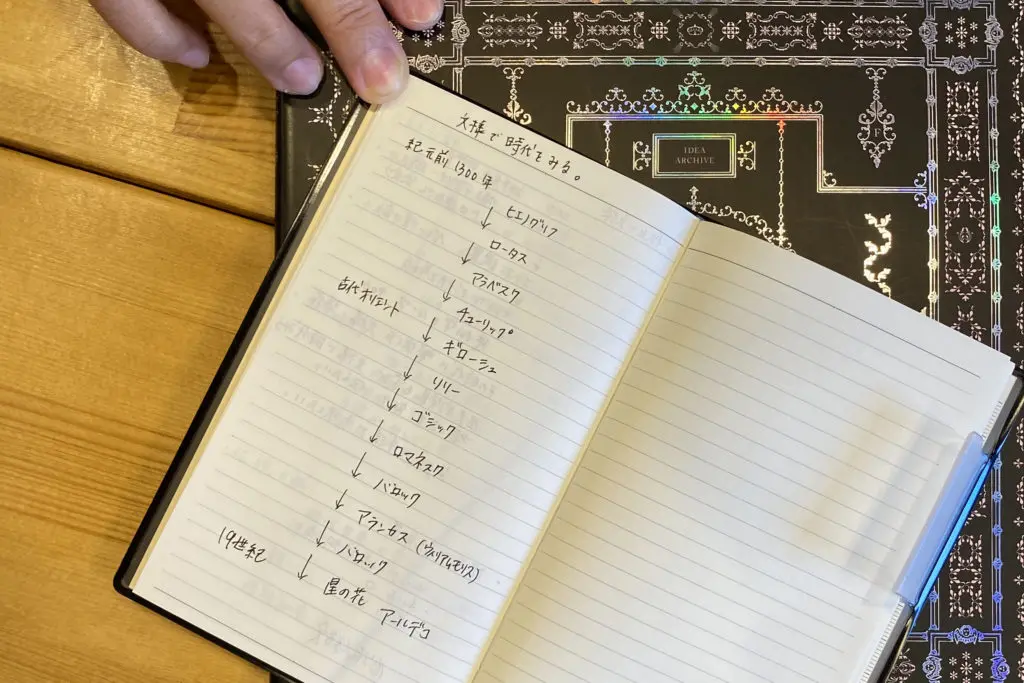
Her filing of the pattern book was very nice. The title and background of each hand-drawn pattern is written on the page next to the pattern, showing the her love for the pattern.
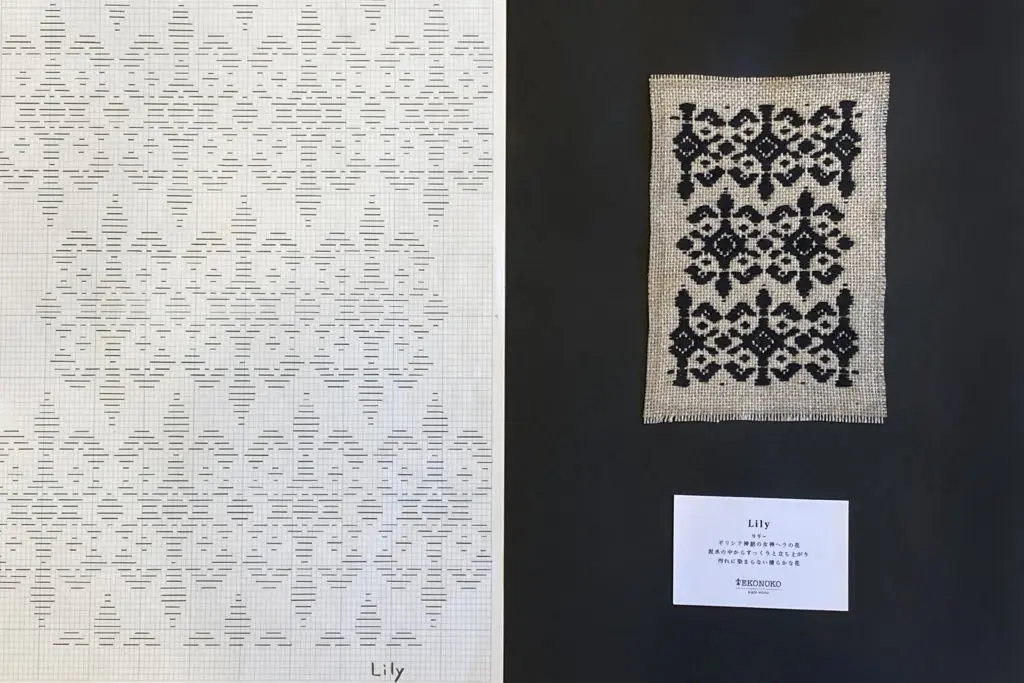
This Nefertiti, the famous ancient Egyptian beauty, was also created from a pattern. I feel that this creation, as if she is trying to dive into the world of that time period, is a sign of her enthusiasm to chew on history and culture with great concentration. As is the case with fashion trends, the social conditions of the times have some influence on the formative styles of the era. Knowing the history and trying to understand the people who lived in that period may lead to knowing the influences in no small measure.
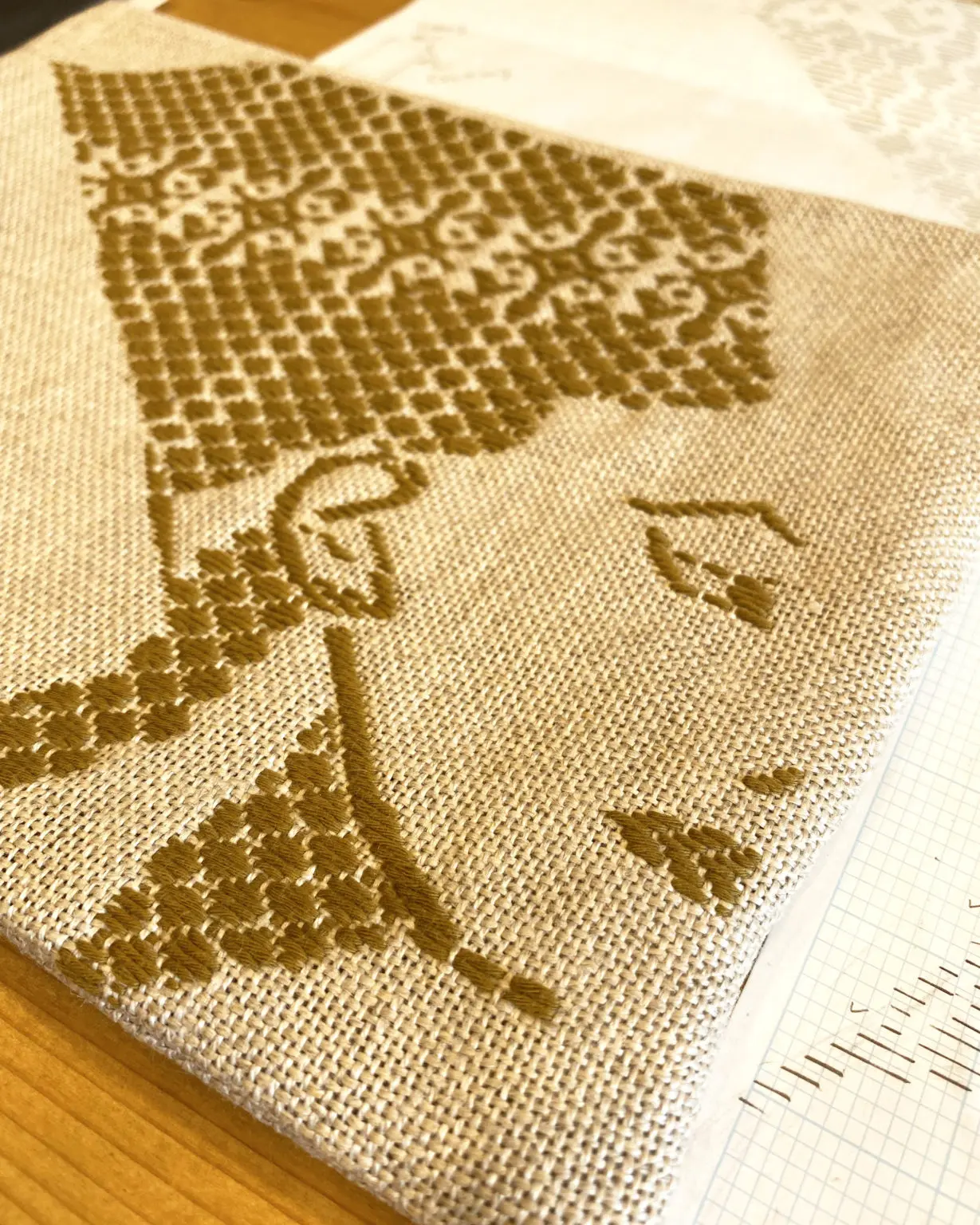
In the process of creating the designs and the remaking of the bags at the beginning of the exhibition, Sae has done a splendid job of utilizing her own personal characteristics without spoiling the world of her longing, and it seems to me that she places importance on understanding others in order to do so. In particular, she is often inspired by the creativity of coeur designer Michiko Ueda, with whom she collaborates on hats.
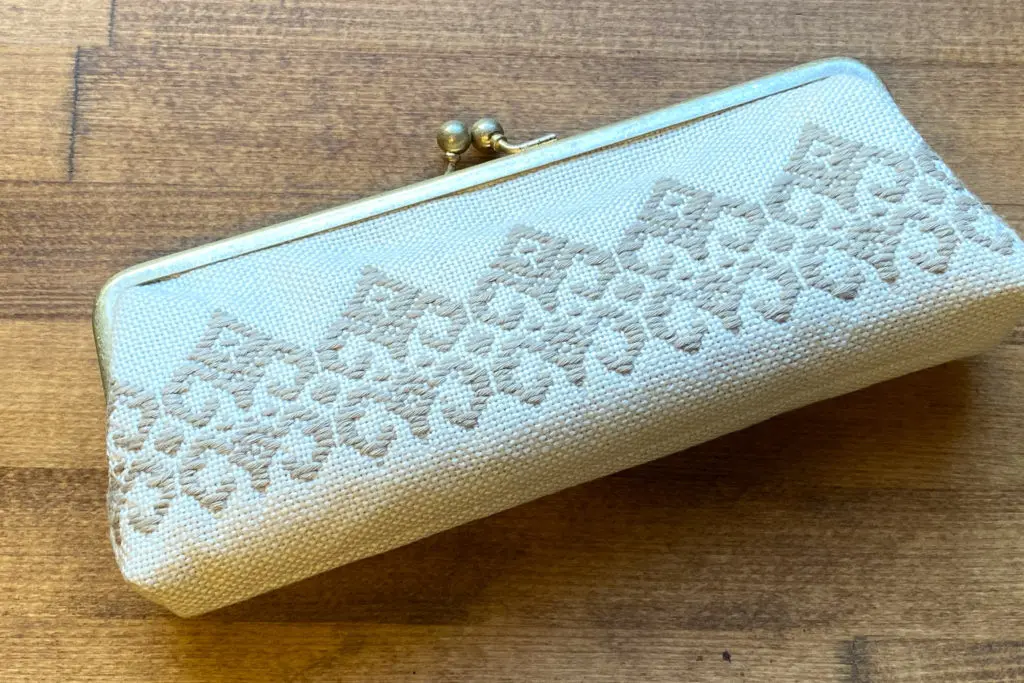
I am amazed by her talent to tackle everything from designing patterns to creating small accessories, which she did not study professionally but taught herself. She loves leather, and is working on combining kogin cloth and leather, but she seems to have some trouble tailoring leather differently from cloth. However, she is able to combine her skills and materials well, and in her twenties she was studying to be a chef, and I felt that the way she makes the best use of the ingredients is similar to that of cooking.

I think he is a really dexterous person, just as his mother said. I think she may have exceeded her mother’s imagination at that time. Saya can do it…” It is a conversation between a mother and daughter that could be heard anywhere, but to me, the words seem like a gift. It is a wonderful thing that Tsugaru’s Sae is connecting the culture of another country to kogin stitching in a friendly way. “I’m ashamed that I don’t know enough about the history of kogin stitch,” she says to me. However, while it is important to know and preserve tradition, it is equally important to explore a new world for the inheritance of culture. I believe that the tug-of-war between conservatism and innovation can continue because it enlivens the world. There are others who can tell us history, but this creation is a world that only she can create. She is an important parson of Kogin.
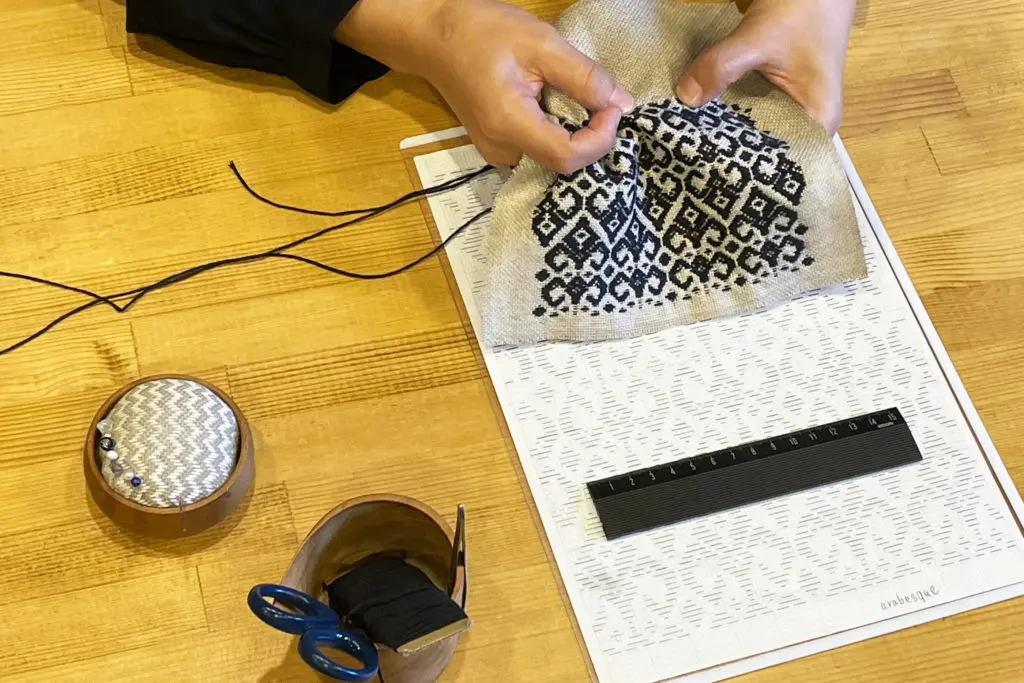
Sae transmit her activities through Instagram, but recently we have been getting more opportunities to exhibit and sell our products. Whenever possible, he demonstrates his work on the sales floor so that people can see how he creates and communicate with customers. He said that he would like to have an exhibition in his hometown Hirosaki, but first he would like to have an opportunity to show his work in Tokyo.
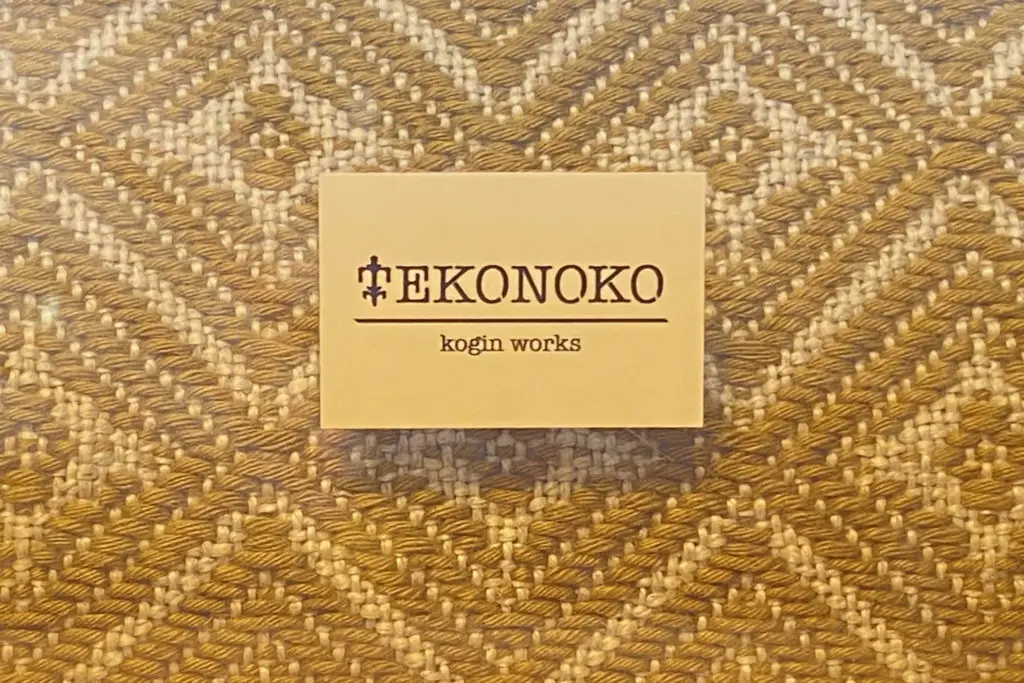
Incidentally, the name TEKONOKO comes from a traditional motif of Kogin Sashimi, which was mistakenly named TEKONOKO after the Tsugaru dialect word for butterfly, TEKONAKO. The mischievousness, which is quite unexpected from a charismatic work, makes us feel a sense of familiarity with it. But you may not even notice such a mistake in such a nice logo.



